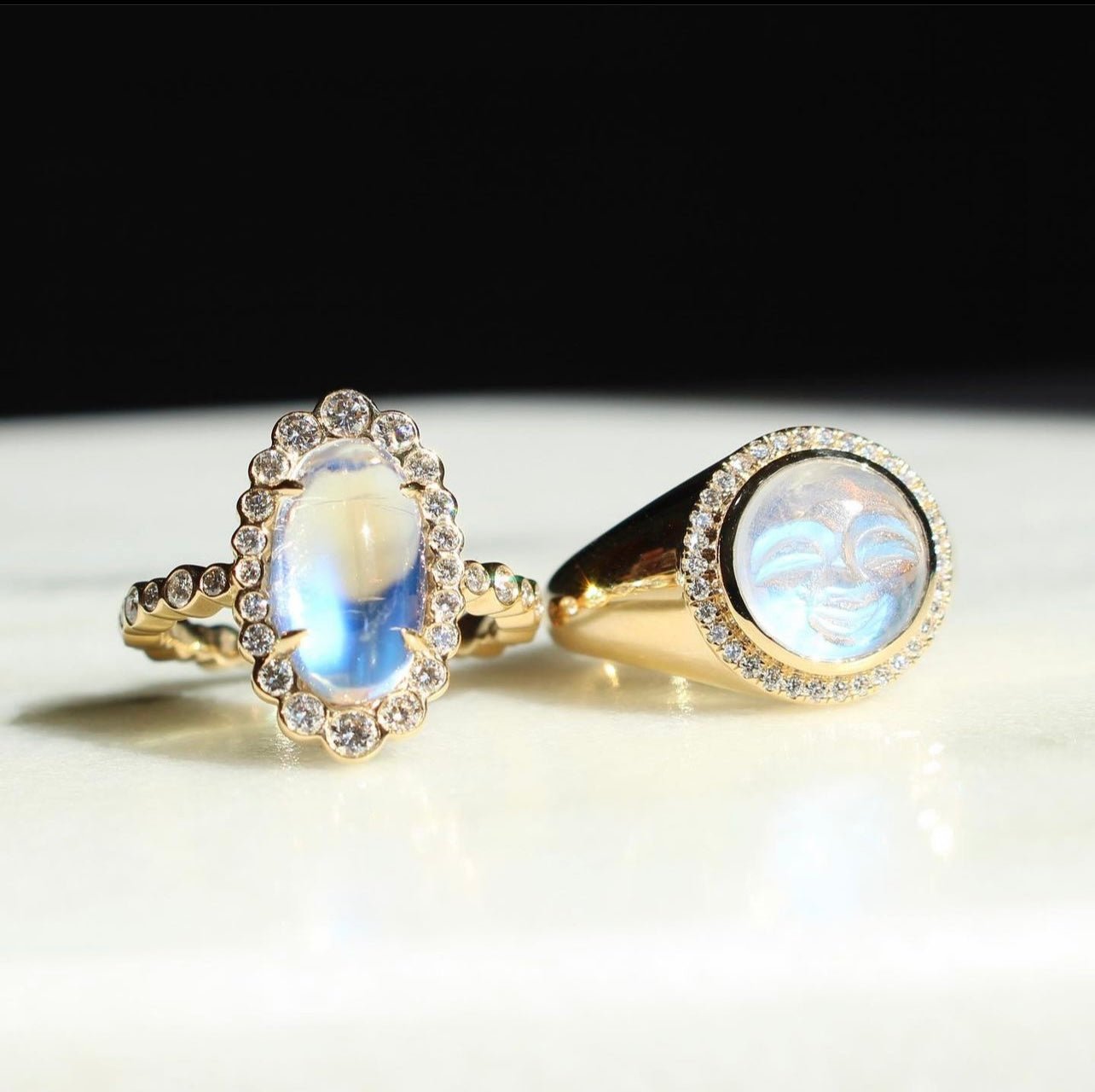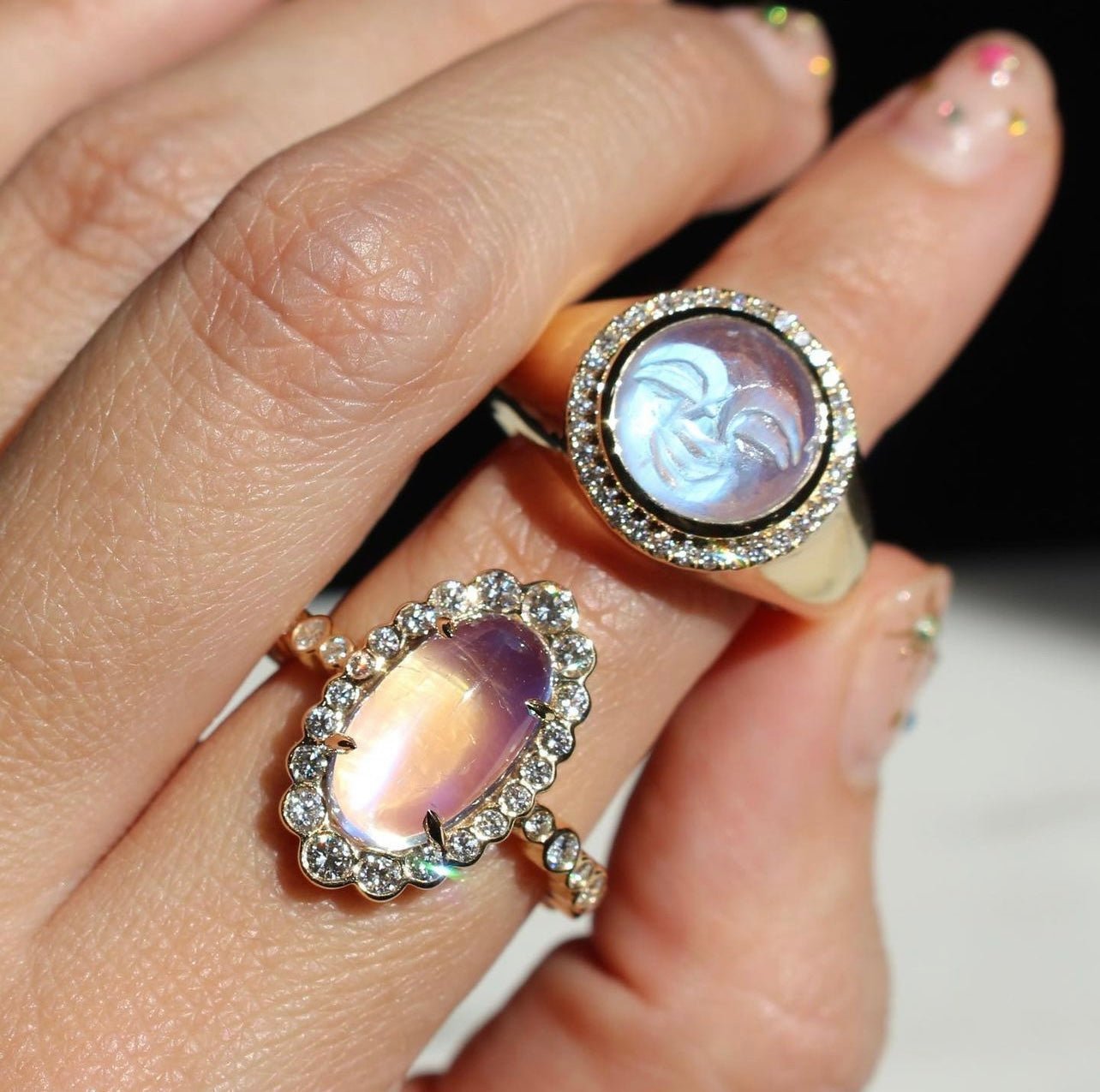You’re probably familiar with the ins and outs of diamonds. Diamonds are some of the most common additions to fine jewelry. During your shopping experience, you will likely come well-equipped with the proper questions for your jeweler and even a few ideas in mind. If you want to delve into the world of exotic gems, you might have a bit of research to do first.
One of the hottest gemstones on the market is the Paraiba tourmaline. It is classified by its intense, almost neon blue-green hue. You wouldn’t be able to miss this gem if you tried! Famous for its origins in Brazil, Paraiba tourmaline has come a long way from its days of discovery.
Tourmaline itself is a wonderful gemstone and quite popular in the fine gem community. However, it simply pales in comparison to its Paraiba subset. To enhance the accessibility of paraiba tourmaline, we’d like to outline exactly how to browse for this stone.
Brazilian Roots
Paraiba tourmaline was first discovered under the direction of Brazilian miner Heitor Dimas Barbosa. He knew that the state of Paraiba in Brazil was rich in gem possibility. He led a team throughout the 1980s as they carefully cultivated the land, digging apart granite pegmatites that were over 480-530 million years old.
Before discovering this beautiful colored gemstone, tourmalines were frequently mined from the state of Minas Gerais in Brazil. While the supply was gem-grade quality, what Barbosa's team struck was even better. In 1986, tourmalines with the most remarkable color saturation in exquisite blues and greens were found.
This changed the game and put Brazil on the map for a new species of tourmaline. Brazilian Paraiba tourmaline, with its intense blue, was like no other colored stone available; the world sat up and took notice.
Traditional Tourmaline
Before we explain what makes Paraiba tourmaline so special, it is essential to understand its differences from regular tourmaline gemstones. Tourmaline is the birthstone for October and is incredible in its own right.
Tourmaline has been mined for centuries, and it comes in various colors. Some of these include pink, black, and even watermelon (a pink center with a green circumference).
Prior to more recent discoveries, it was believed that red tourmaline was actually rubellite. The Russian monarchy used a crown jewel called Caesar’s Ruby in its collection. It was later found that the piece was a rubellite tourmaline gemstone.
How Is Paraiba Different Than Other Tourmalines?
Since Paraiba is a variety of tourmaline, the gems have a few similarities. For example, they are both between 7 and 7.5 on the Mohs Scale of hardness. This makes them fairly desirable in terms of durability and great inclusions for jewelry pieces that deal with more wear and tear.
Both Paraiba and regular tourmaline work well in rings and bracelets, which is something to consider while shopping. It opens up the possibilities for the consumer.
It is also good to note that regular tourmalines and Paribas are prone to inclusions. This means you’ll know when a Paraiba on the market is fake if it is perfect under a microscope (more on that later).
For now, all you have to worry about is not to judge a tourmaline by its cover — literally! Some Paraiba tourmalines even have “centipede” like cracks, which jewelry connoisseurs occasionally seek out.
Paraiba Specialties: Characteristics
What makes Paraiba different from regular tourmaline is its makeup. Paraiba was tested after its initial finding by Barbosa’s men, and copper appeared. Copper-bearing tourmalines had not yet been documented. Prior to Paraiba, it was thought that tourmaline stones got color by varying concentrations of manganese, iron, vanadium, and chrome they held.
Cleavage and Hexagonal Crystallography
True Paraiba tourmaline doesn’t have any cleavage and has a hexagonal crystallography. Its specific gravity is between 2.84 and 3.10.
Saturation
Saturation is the most important asset to categorizing a Paraiba. If you have a gorgeous blue-green tourmaline that isn’t striking in its shades and doesn’t have that neon green-like quality, chances are it is a regular tourmaline.
Presence of Copper
Determining how much copper is included in the stone can help to distinguish it with conviction. Stereoscopes are helpful but not always foolproof because they cannot identify tourmalines with a lower, but still existent, amount of copper.
Other Findings
Over time, copper-bearing tourmalines began to pop up across the world. In Africa, this gem was found in Kenya and Mozambique. US variations can be unearthed in California and Maine. In South Asia, this stone is found in Pakistan. Stunning pink tourmaline from San Diego was famously beloved by Chinese royalty.
This pushed the Gemstone Industry Laboratory Conference to transition Paraiba tourmaline from being the name of a regional stone to the title of all copper elbaite, fine tourmalines. It is critical to make a distinction between true, local Paraiba and gems from elsewhere when shopping. Ask your jeweler where your stone was mined from before purchase.
The Nigerian Paraiba tourmaline was a turning point for gemologists because it helped them piece together what exactly was causing these stones to have such electric blue colors. Since Nigeria and Paraiba, Brazil, were connected during the days of Pangea, their rock formations were similar. Thus, they had the same amounts of copper in their pegmatites.
If you are lucky enough to get your hands on a Nigerian Paraiba tourmaline, don’t skip over it — it's not as bright as Brazilian Paraiba and certainly not the best option, but it is the closest you can be without buying the real thing.
How Many Carats To Expect With Paraiba Tourmalines
If your Paraiba is too big, that should set off alarms. Most natural Paraiba tourmalines are less than one carat. It is possible to find larger pieces, but you’d have to have connections and a hefty budget. True Paraiba stones from Brazil were initially dug up in numerous small pieces.
Consider Cut
Paraiba tourmalines are so valued that they deserve a cut that is just as glamorous as their reputation. Cuts have the opportunity to bring out shades hidden within even the most saturated stones.
That is why Paraiba tourmaline is known for its custom cuts, often done after heating enhancements (used to eliminate additional manganese and eliminate residual red coloring). Some favorites are brilliant cuts like oval cuts and pear cuts.
The best Paraiba tourmalines are the ones that have been cut with attention and skill. A Paraiba that has been cut with windowing will decrease in value and price. They have been cut to optimize shine and saturation. This is why we always advocate shopping at reputable jewelers, where their pieces are fashioned and designed by the company personally.
How To Tell Your Paraiba Tourmaline Is Authentic
With a gemstone as fine and luxurious as Paraiba tourmaline, fraudulent items are no surprise.
Here are a few ways to weed out the matching gems:
Lab Creations and Imitations
Lab-made gemstones are not necessarily imitation stones by definition. They are created in a laboratory under careful guidelines and gemologist watch, in environments that perfectly mirror the natural world for tourmalines. The process doesn’t take the millions of years required for crystalline schists to form, but it does a decent job of mimicking the real thing.
As we mentioned before, a surefire way to know that you’re dealing with a lab-created or imitation Paraiba is to look for inclusions. If there seem to be no imperfections, you might have something too good to be true on your hands. Inclusions aren’t always visible to the naked eye in raw tourmalines, though, so you should always consult an expert for a second opinion.
As a consumer, always remember that rarity only comes from natural gemstones. Imitations and lab creations have absolutely no rarity and a significantly reduced market value.
What Is the Value of the Paraiba Tourmaline Gem?
Natural Paraiba tourmalines with exceptional, vivid blues and greens sold for $20,000 a carat at the height of the Paraiba boom. While prices may have mellowed since then, due to worldwide mining of the gemstone, they are still not cheap. This is because of their inherent value and the lifetime investment one makes when they buy fine and exotic gems.
The typical price point for a normally sized Paraiba tourmaline (anything smaller than one carat) is somewhere between $2,000 and $5,000. As the carat size increases, so does the price.
Clarity also helps to determine how much your Paraiba should cost, just like it does for any gem. The clearest Paraiba will be more expensive than one with blemishes or murky colors.
Certifications
Just like we’ve mentioned so many times before, it is paramount that you ask your jeweler for help in finding the best Paraiba for your needs. Sometimes this means requesting further proof of the gem’s origins or qualities. The good news is that any genuine jewelry store will be able to provide you with these documents.
The Gemological Institute of America, a decades-old institution that trains the best and brightest gemologists, awards certification for gemstones. If you request this paperwork, your jeweler will likely already have it on hand. If you have to get a private GIA-trained gemologist to grade your Paraiba, that is also an option.
At Mark Henry Jewelry, all of our pieces come with GIA-grade reports and certifications for optimal peace of mind. Our relationship with our customers is built on trust and transparency. That is why we label our gemstones as accurately as we can, and we don’t shy away from explaining where they come from and how our company acquired them.
Our Paraiba Tourmaline
We love our exotic gemstones here at Mark Henry Jewelry. Paraiba tourmaline is just one of our favorite selections added to a very long list of fine stones. We feature Paraiba in many of our collections. It is included in rings, bracelets, necklaces, and even earrings.
Our Brazilian Paraiba Halo Ring is the epitome of colored tourmalines that will leave you asking, is it blueish-green or greenish-blue? This 0.42 ct stunning trillion cut blue-green Paraiba is surrounded by 0.18 carats of diamonds. It sparkles and shines, catching the light at every turn.
Getting Started on Your Colored Gemstone Journey
Now that you know what type of Paraiba tourmaline you’re looking for (Brazilian, with a neon, vivid blue color and custom cut), how do you begin? The best idea is to browse jewelry collections and see what catches your eye.
If you shop at trustworthy businesses, chances are you’re getting what is advertised. With properly requested certifications, and after reading the characteristics of the Paraiba, you’ll be able to spot a fraud in no time!
Sources:
October Birthstones | Opal & Tourmaline Birthstone Information | GIA
Paraíba Tourmaline Value, Price, and Jewelry Information | Gem Society


Dear Mr. Mark Henry
I hope this message finds you well.
I would like to extend to you a warm greeting and a special invitation to explore the offer attached herein. Our team has dedicated time and effort to craft a proposal (natural rough gem Paraiba tourmaline from Mozambique) that we hope meets your needs and expectations.
Please take a moment to carefully review the attached document. We are confident that you will find value and exciting opportunities that may benefit you or your company.
Should you have any questions or need further information, please do not hesitate to contact us. We are here to assist and look forward to discussing any aspect of the proposal that may be of interest to you.
We sincerely appreciate your consideration and eagerly await the possibility of collaborating together.
Best regards,
João de Almeida
CEO
Cell/WhatsApp: +258 868627668